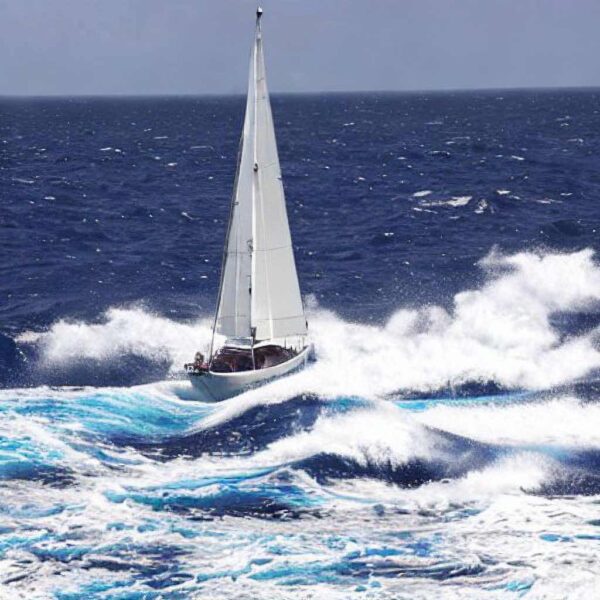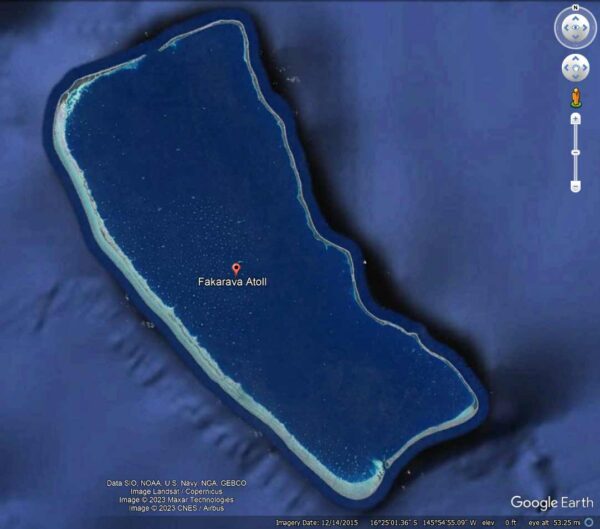January 19, 2023
A long time ago – July of 2012 – I wrote about our trouble in the pass while leaving Fakarava in the Tuamotus Islands. (That post is here.) We tried to time our exit through the pass for slack tide but it turns out we were wrong. We tried to abort and turned around but found ourselves being drug backwards through the channel by the current.
It was wild and scary and I asked Cyndi not to go below to get her camera. (I didn’t want to die alone! 
Enter AI. Now I can type a sentence and create a very good representation of what it was like. Here’s what I asked Stable Diffusion to do:
A picture of a 12 meter sailboat caught in big seas while leaving a tropical lagoon’s pass.
And here’s what I got…

Note: I tried the same thing with DALL-E but the results weren’t very good. Today I read about Stable Diffusion and this is the first image I tried. Wow!
I am really loving this new generation of AI. It’s very convenient. As my intelligence wains with age, the artificial form, so far at least, is picking up the slack! -Rich
A few words about passes, currents, atolls, and waves:
Current can affect the size and shape of the waves, making them taller and steeper when the current and wave directions are opposing or more gradual when the current is with the waves.
An atoll such as Fakarava boasts a vast enclosed lagoon, filling and draining through just a few key passes during the ebb and flow of the tides. We try to time the passes so that we transit at slack tide, or maybe with just a little current going our way. That’s not so easy.

When we sailed through this area back in 2012, there just wasn’t any good tide information available. The best advice we’d received was to call the local scuba diving boats on the radio and ask them when it would be best. This time, we couldn’t reach anyone, so we took our best shot (we were wrong!).
Complicating things is the fact that the the lagoon is surrounded not just by low-lying land but also in places by only a coral reef that’s low enough for water to pass over it into the lagoon. In some seas the lagoon is constantly filling from waves over the reef and the tides through the pass can be outgoing for days at a time, without a break. I think this is what we experienced.
We had a moderate swell – maybe a meter or so – from the northwest, opposing the current flow. The waves got very large and steep and were breaking all around us starting just outside the pass and out to almost a mile offshore.







